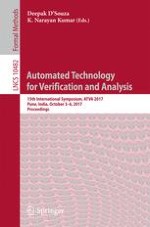2017 | OriginalPaper | Buchkapitel
HyLeak: Hybrid Analysis Tool for Information Leakage
verfasst von : Fabrizio Biondi, Yusuke Kawamoto, Axel Legay, Louis-Marie Traonouez
Erschienen in: Automated Technology for Verification and Analysis
Aktivieren Sie unsere intelligente Suche, um passende Fachinhalte oder Patente zu finden.
Wählen Sie Textabschnitte aus um mit Künstlicher Intelligenz passenden Patente zu finden. powered by
Markieren Sie Textabschnitte, um KI-gestützt weitere passende Inhalte zu finden. powered by
